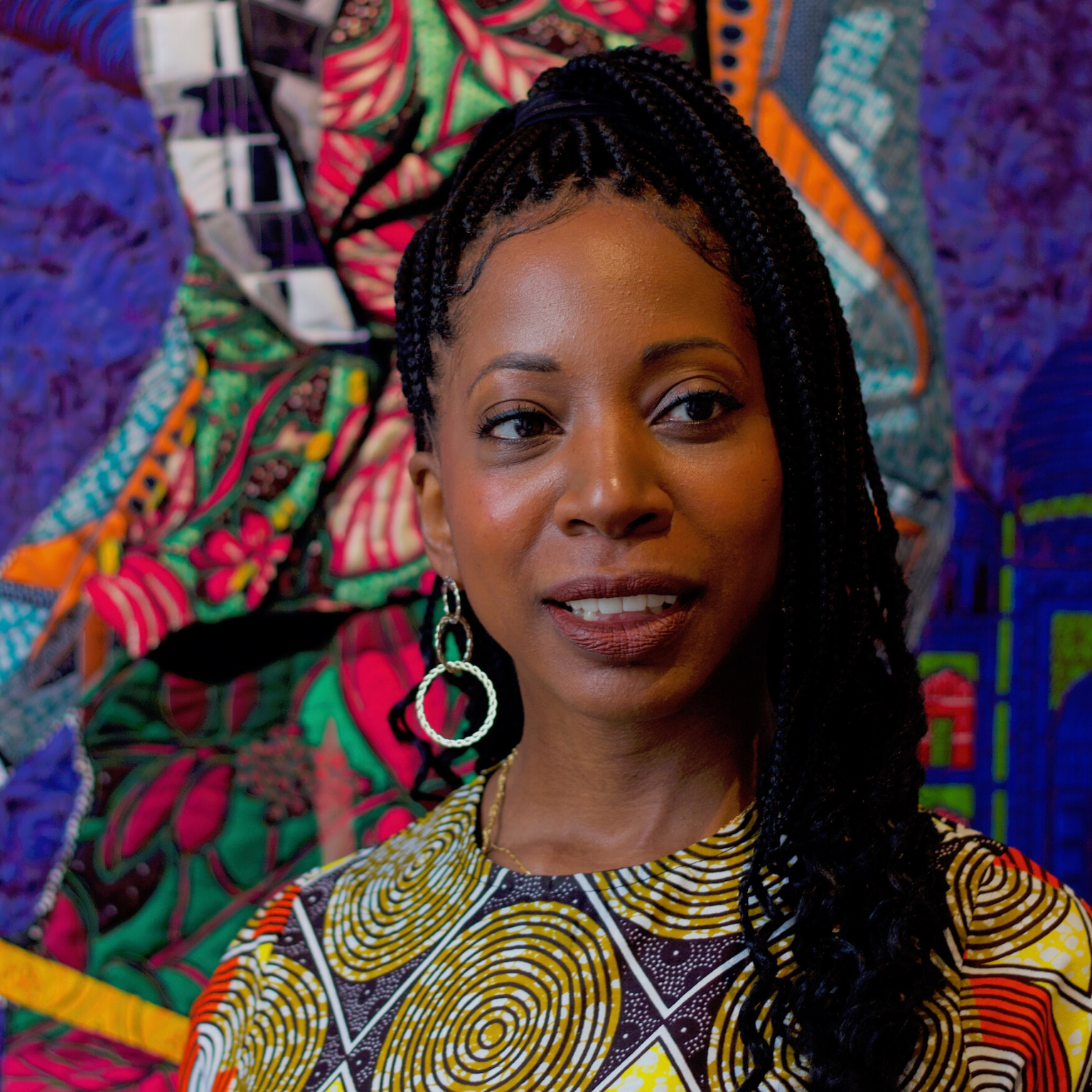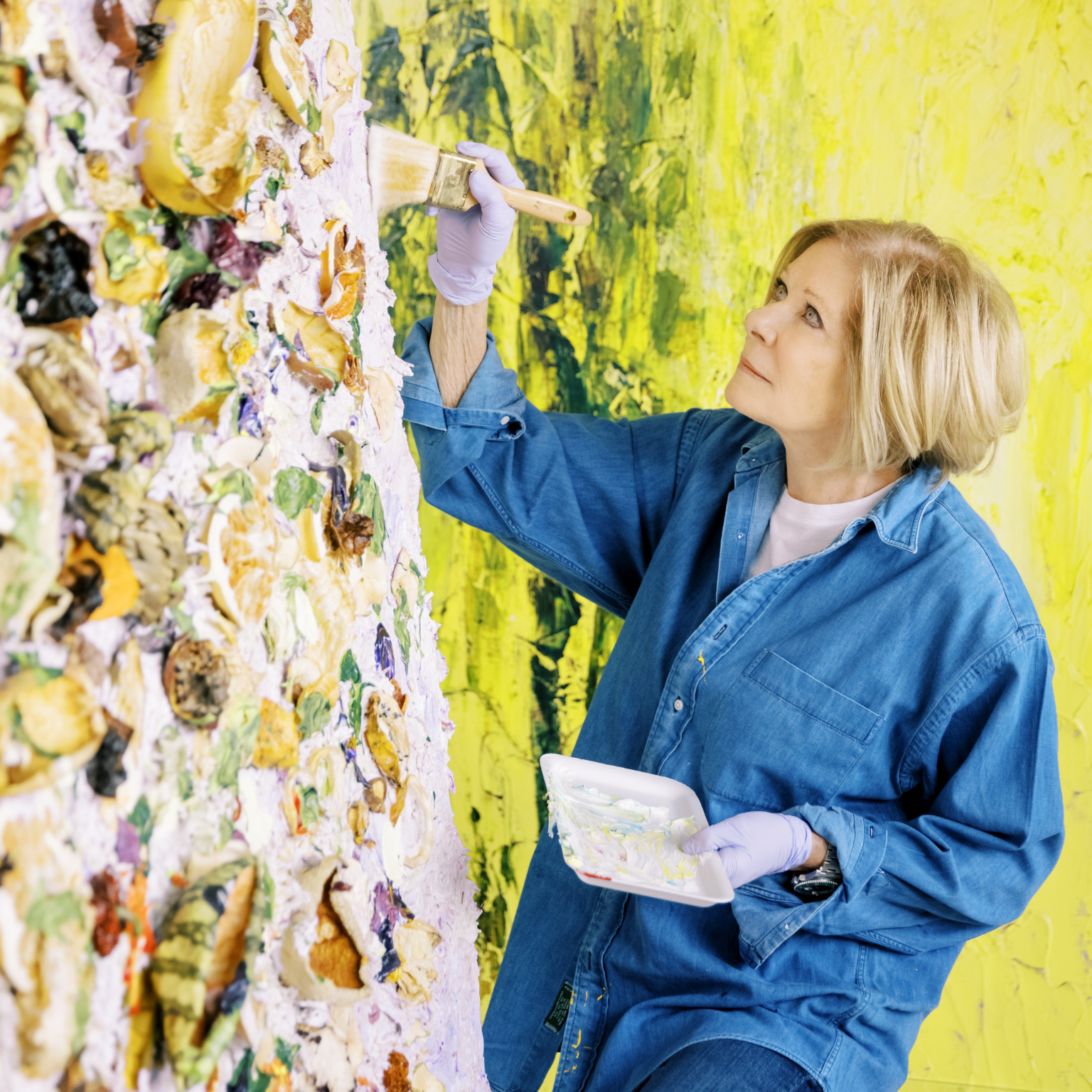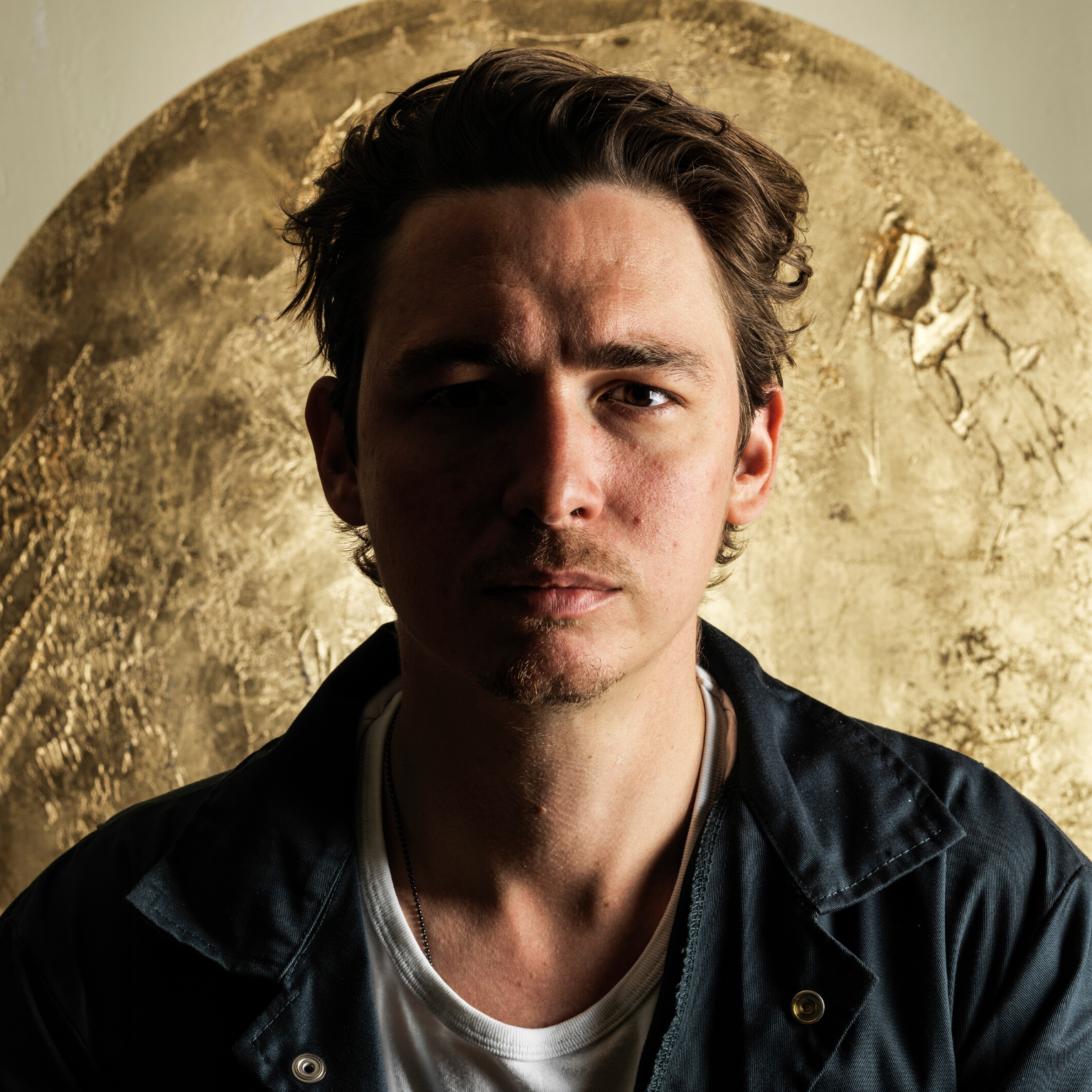Bisa Butler is an African American fiber artist from New Jersey. Photography © Bolu Gbadebo
1.In your opinion what is the role of a museum?
I look at museums as the conservators of culture. The are the bastions of culture that will amplify, protect and preserve artifacts of culture for the people of today and for the future.
2.What are your favorite museums in the world? Why?
My favorite museums are the Brooklyn Museum, the Whitney Museum, and the Metropolitan Museum of Art; they are all in close proximity. I grew up in northern New Jersey and all of these institutions are about 30-40 minutes from my house, so they are only a train ride away.
The Brooklyn Museum always has an exciting contemporary artist and very often this is an artist of color, or a woman. I saw Kehinde Wileys’ work there back in 2006, Swoon had a huge installation in their atrium, El Anatsui had a huge exhibit there, and they had an amazing Jean Michel Basquiat exhibit.
I love the Whitney Museum for their permanent inclusion of black artists into their collections. Black art is not segregated into a special exhibit but integrated throughout the displays.
The Metropolitan Museum of Art is stunning in its architecture and its historical collection is remarkable. The Temple of Dendur with its reflecting pool is transformative. You almost feel what it may have been like in ancient Egypt.
You are able to stand within the temple and be inside of this ancient monument. Although it was built in the Roman period of Egypt, and is now inside of New York City, the temple of Dendur is a time capsule.
3.How important are social networks in your business? And which platform do you prefer and why.
Social networks are incredibly important, especially now in the time the coronovirus quarantines, and the George Floyd inspired uprising against police brutality. They connect me to my audience with no middle man in-between. Social networks allow for reciprocal communication between me and art lovers, collectors, galleries, museums,students and artists.
I use Instagram most often with Facebook a close second. I prefer Instagram for its highly visual nature. It was originally mostly photographs and it is still well curated.
4.In particular, due to the coronavirus emergency, how have you changed your business on social networks?
I’ve gotten much more active on my social networks due to the coronavirus emergency. Because we are quarantined at home many of my exhibits have been cancelled or indefinitely postponed.
The only way people can see my work now is online and social networks have wider reaches than many websites. I tend to post more, interact more and I’ve participated in at least 6 “Live” events where people can speak to me directly and ask me questions.
5.To create greater engagement among museums, artists and professionals, do you have any advice for cultural projects such as #MuseumWeek?
I would suggest the museums , artists and professionals do more virtual studio visits and have chats with interesting enraging people. I tune into a new chat almost every day and I’d like to see more black artists being engaged with museums.
Interview by Fabio Pariante, journalist
MORE
Bisa Butler on social networks: Instagram
Bisa Butler (Orange, 1975) is an African American fiber artist known for her works celebrating black life, also through the colors that she chooses.
Butler grew up in South Orange and graduated from Columbia High School in 1991 and then in Fine Art at Howard University. Finally, she took a Fiber Art class that inspired her choice of the fibers as an artistic medium and she often feature portraits of famous figures in black history, such as Jackie Robinson and Josephine Baker, ma anche Jean-Michel Basquiat, Malcom X e Nina Simone.
Among the others, the artist has exhibited at the Smithsonian Museum of American History, the Epcot Center, the National Underground Railroad Freedom Center, at EXPO Chicago and at The Art of Jazz, a Black History Month exhibition in Morristown, New Jersey.
The quilted portrait dedicated to Wangari Maathai the first African woman to win the Nobel Peace Prize, environmental activist, it was the cover of TIME magazine for #100womenoftheyear special double issue.



